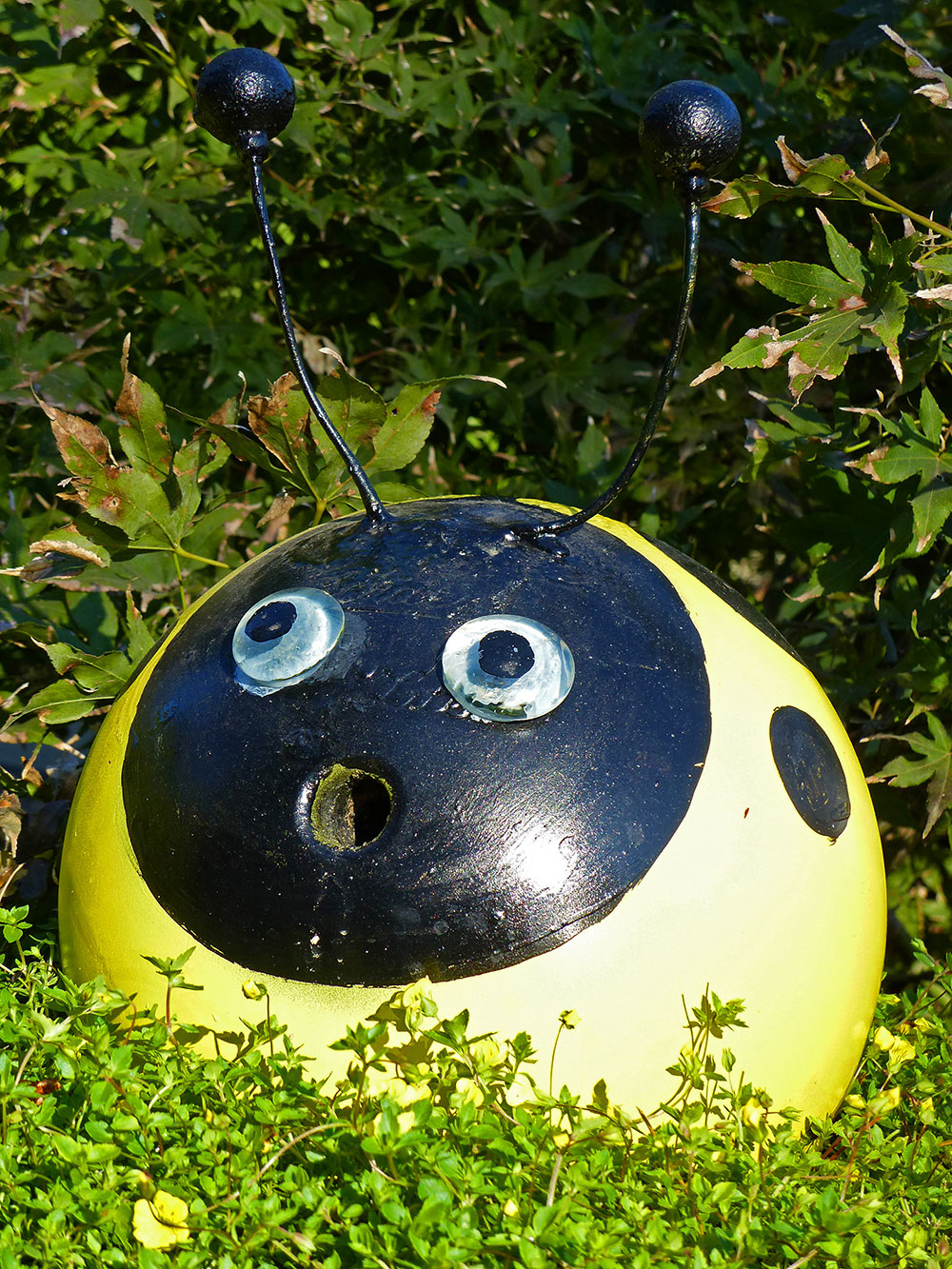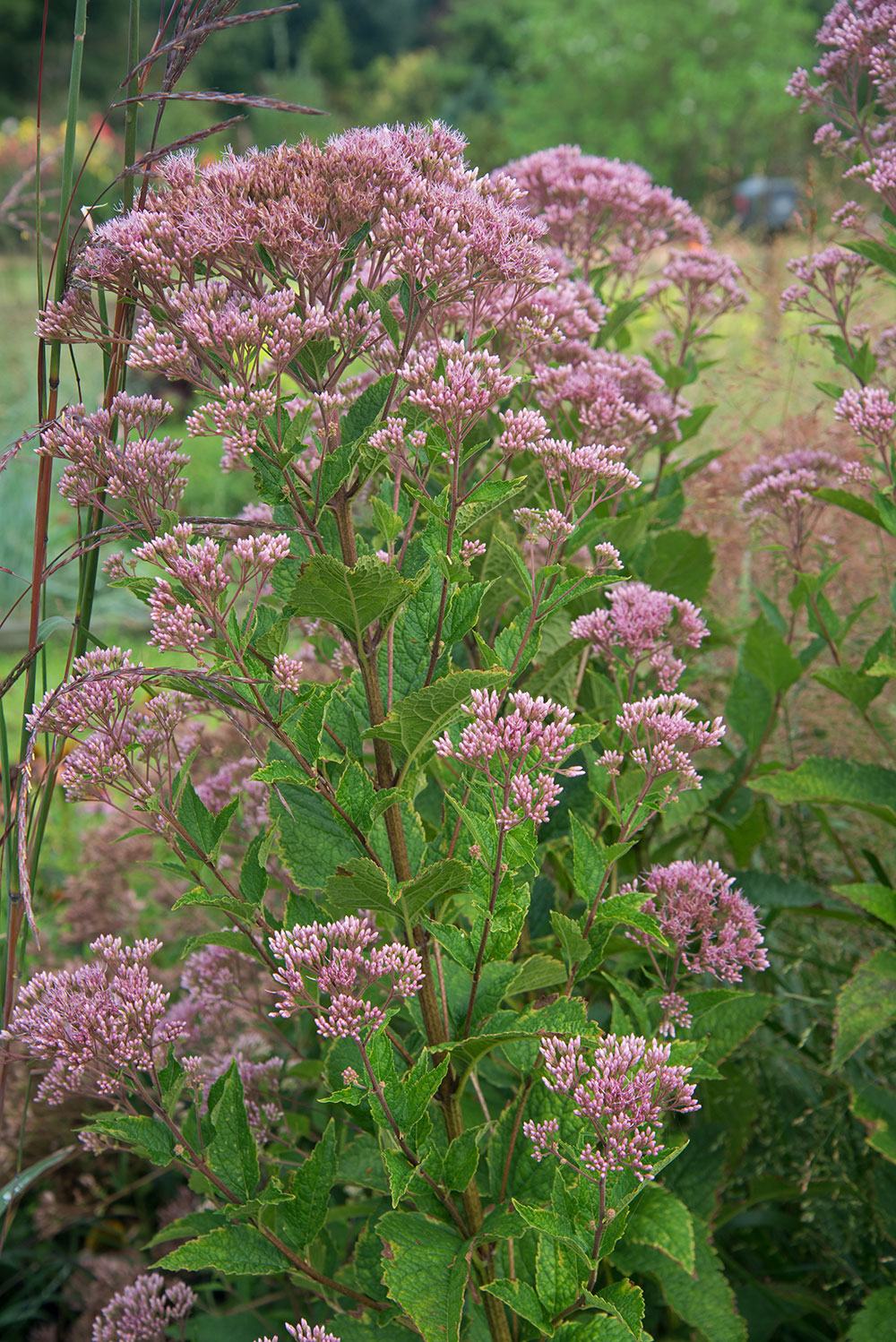Planting weeds might not seem like the best way to create a visually inspiring garden, but I do heartily endorse one snappy exception: Joe Pye weed (Eutrochium sp. aka Eupatorium sp.). This herbaceous perennial named after Joe Pye, a Colonial-era Native American medicine man, can make an impressive splash in the landscape with its size — it can stretch upwards to 8 feet tall — and equally impressive swaths of pinkish-purple flower fans that come out to party in the summer heat.
Like Joe Pye the man, Joe Pye the plant is a native, and it is normally found in Southeastern marshes, ditches, and damp meadows. However, it can readily put on a show in any cultivated landscape. Heck, I have even seen this “weed” flaunting flowers in some of Europe’s finest gardens!
Joe Pye weed prefers full to partial sun in an open, airy spot. Its growing ground should be well worked and liberally enriched with compost or other soil conditioners. And since it is not a stranger to soggy conditions in the wild, this impressive plant is also a prime candidate for a rain garden or low-lying, poorly draining areas. Rated for USDA Zones 4 through 9, it is certainly hardy enough for area gardens, and, as a bonus, is deer resistant.
Local nurseries stocking native plants will often have flowering Joe Pye weeds at this time of year, but gardeners can also opt for freebies from fellow growers in the fall when this indigenous pretty can be easily propagated and passed along by way of root divisions. And if you are looking for a particular selection, online e-searching is always a good option.
Because of its size, Joe Pye weed works best visually if left to tower in the back of a flower border. Even in such a tucked-away spot, it won’t be lonely, because, if you plant it, butterflies and bees will certainly come.
Have limited space in your garden? Grow a Joe cultivar more restrained in stature. ‘Gateway’ has been a popular pick for years because it levels out at around 5 to 6 feet tall but still has the flower power of its full-size cousin. Want smaller? Consider, in descending order, newer introductions such as ‘Little Joe’ (4 feet tall), ‘Baby Joe’ (3 feet tall), or ‘Ruby’ (2 to 3 feet tall). And for a bit of dusky coloring, the compact ‘Chocolate’ (3 to 4 feet tall) shows off foliage tinged in purplish-bronze shadows.
To Do in the Garden
July

A creative, virtually indestructible “gazing globe”
Because most are made of glass, gazing globes are such fragile things — so much so that it is sometimes tough to enjoy their shiny presence in the garden because the potential for breakage is obvious. So get tough — or in this case, get a tough gazing globe. Have an old bowling ball stuffed away in a closet? If it isn’t already a fancy, sparkly orb, spray on a few coats of metal-flake, pearl, chrome, or neon paint. Or if you enjoy mixing whimsy with your painting or crafting skills, transform that unused bowling ball into a one-of-a-kind fun work of virtually indestructible garden art.
- The herb garden should be maturing nicely now, but if plants such as savory, oregano, mint, thyme, or basil are starting to bully beyond their allotted space, cut them back. This early summer pruning will also help any lanky plants develop a bushier appearance.
- Continue filling the bird bath with water at least once or twice a week. To keep this fly-in refreshment stand clean, also give it a good wiping every two weeks. In addition, check the bird feeder after hard rains, and if any soggy yuck has accumulated in the basin, clean it out and refill with fresh, dry seed.
August
- While the August heat might be stifling to you, it’s great weather for garden beasties such as spider mites, thrips, aphids, white flies, and flea beetles to come out and “play” on your plants, so step up your pest patrols.
- The summer veggie patch should be in full production mode this month, but for even more yields of garden-grown goodies from okra, indeterminate tomatoes, green beans, squash, and cucumbers, harvest the maturing crops once or twice a week now.
- Didn’t crank up a summer vegetable garden this spring? There is still time to join in on the fun if you start such warm-season favorites as squash, okra, green beans, or cucumbers at the beginning of this month.
- And no, it’s not too soon to start a fall vegetable garden, since many cool-season delectables need warm soil to develop properly. This month is a good time to begin planting cabbage, broccoli, carrots, Swiss chard, cauliflower, collards, lettuce, kale, radishes, mustard greens, parsnips, and onions.
- Abundant Brunch Flavors Await
- Expanding by The Yard
- School’s In!
- Restaurant Profile: Herons
- Erica Chats: The Triangle Ice Cream Tour
- Restaurant Profile: SAAP Laotian Restaurant
- Small Business Spotlight: Local 919
- Celebrated Spirits: Queen’s Necklace
- Celebrated Spirits: Color Correction
- Pay It Forward: Ripe for Revival
- Garden Adventurer: Grow a Joe








